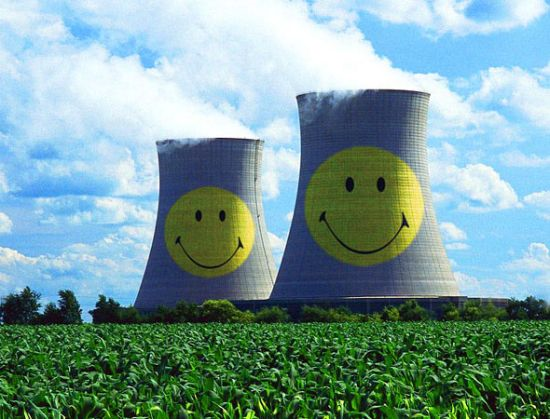The human race grows day by day,in terms of power,technological advancement and is leading to a far more technologically sophisticated and safer world.As the world develops,there is a constant look out for more and more energy sources.As the fossil fuels are on the verge of getting over,the nuclear energy seems to be the only viable option available.but this also has its set of side effects on the environment.Read on,as we unravel the pros and cons of nuclear power.
Nuclear power, or nuclear energy, is the use of exothermic nuclear processes,to generate useful heat and electricity.It may be of different types such as nuclear fission, nuclear decay and nuclear fusion.Nuclear fission is either a nuclear reaction or a radioactive decay process in which the nucleus of an atom splits into smaller parts (lighter nuclei). The fission process often produces free neutrons and photons (in the form of gamma rays), and releases a very large amount of energy even by the energetic standards of radioactive decay.While Nuclear fusion is nuclear reaction in which two or more atomic nuclei collide at a very high speed and join to form a new type of atomic nucleus. During this process, matter is not conserved because some of the matter of the fusing nuclei is converted to energy.
Presently the nuclear fission of elements in the actinides series of the periodic table produce the vast majority of nuclear energy in the direct service of humankind, with nuclear decay processes.This is either directly or indirectly used in form of boiling water reactors or indirectly such as geothermal energy to power the energy needs of today.
The routine health risks and greenhouse gas emissions from nuclear fission power are small relative to those associated with coal, oil and gas. However, there is a immense risk if containment fails,which in nuclear reactors can be brought about by over-heated fuels melting and releasing large quantities of fission products into the environment.However the impact that can be caused by such a adverse reaction is measured by the type of radioactive substance in consideration.There are three types such as high level,medium level and low level waste.Some high level wastes such as the spent nuclear fuel from uranium-235 and plutonium-239 nuclear fission contains more than 100 carcinogenic isotopes such as strontium-90, iodine-131 and caesium-137.These are some of the most long-lived radioactive wastes, including spent nuclear fuel, must be contained and isolated from humans and the environment for a very long time.
Moderate amounts of low-level waste are produced through chemical and volume control system.There are solid,liquid and gaseous waste.the liquid waste can be reprocessed continuously until it is no longer harmful.The gaseous waste is continuously filtered to make sure it does not leak out into the environment.Solid waste can be disposed of simply by placing it where it will not be disturbed for a few years.
Although in this era of cutting edge technological innovations,it would seem that it would be easy to safely dispose of the waste.But despite a long-standing agreement among many experts that geological disposal can be safe, technologically feasible and environmentally sound, a large part of the general public in many countries remains skeptical.One of the challenges facing the supporters of these efforts is to demonstrate confidently that a facility will contain wastes for so long that any releases that might take place in the future will pose no significant risk to the public or to the environment.
Life cycle analysis of carbon dioxide emissions show nuclear power as comparable to renewable energy sources. Emissions from burning fossil fuels are many times higher and nuclear energy are in fact much more environment friendly.but the production of nuclear energy itself comes with its own set of requirements.Seawater is quite corrosive so a nuclear plant requires a source of fresh water.During the process of nuclear power generation, large volumes of water are used.Nuclear plants must collect around 600 gallons/MWh for during its active life cycle.The water collection systems that plants use are harmful to the aquatic life living in that area.Fish, plankton, manatees, sea turtles and many others are sucked into the filters and other structures within the system and killed. The deaths of these animals can have negative effects on their ecosystems.
Although there are many pros and cons,for sustainable nuclear power generation system would include improving efficient energy use and greenhouse gas emissions intensity by updating technology and functionality through the entire life cycle,improving nuclear security,eliminating all radioactive waste at the end of life and minimizing the environmental impact during the nuclear fuel cycle and ,most importantly the nuclear power industry must regain public trust or face obsolescence to its existence.
Hence it seems that nuclear energy is the only viable alternative to the energy crisis of the world.But efficient use of nuclear energy,the world can sustain its power needs and be more environmentally friendly.the only question remains if we are technologically capable to safely harness nuclear energy and ensure the safe disposal of its waste.

Leave a Reply